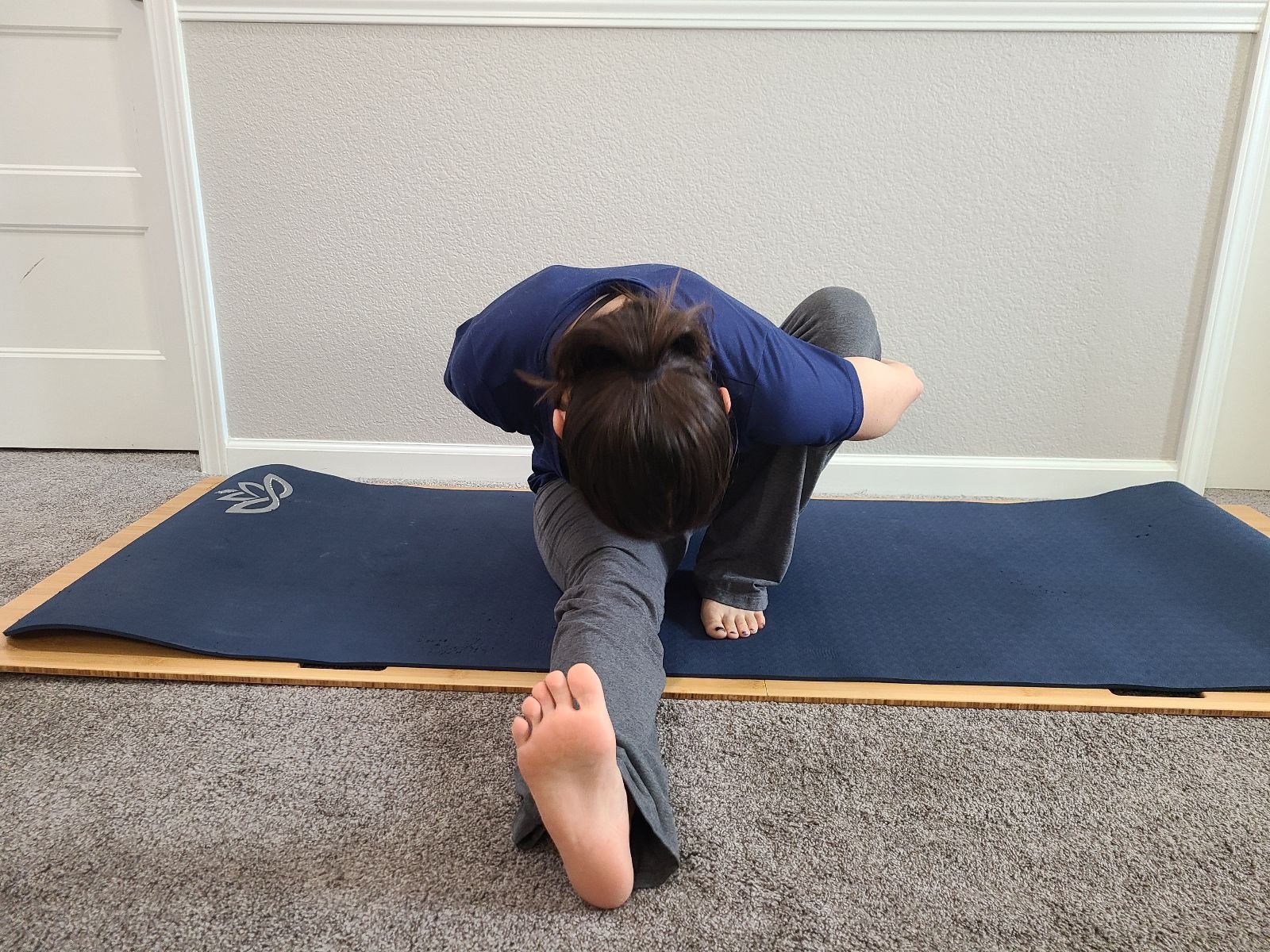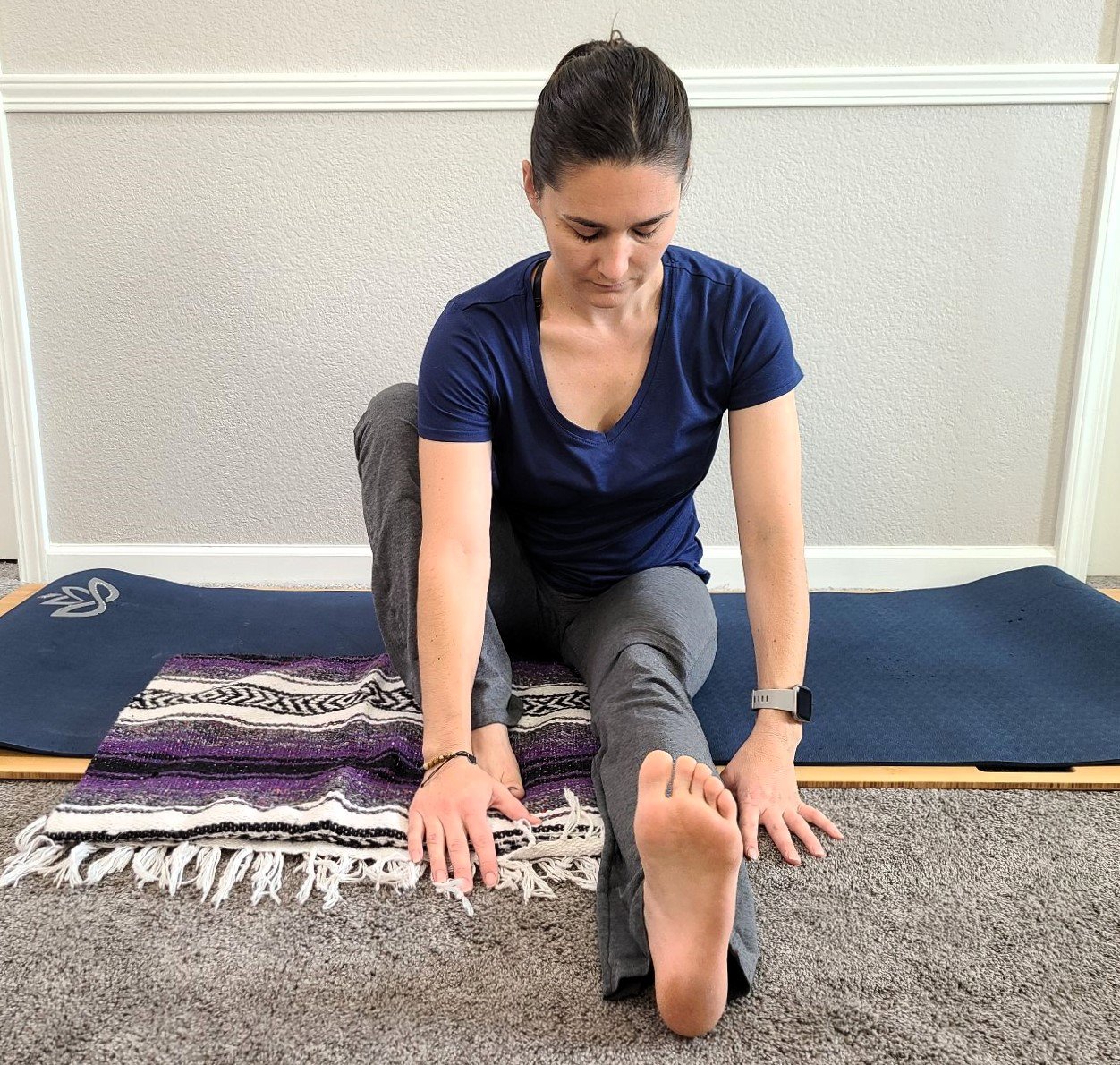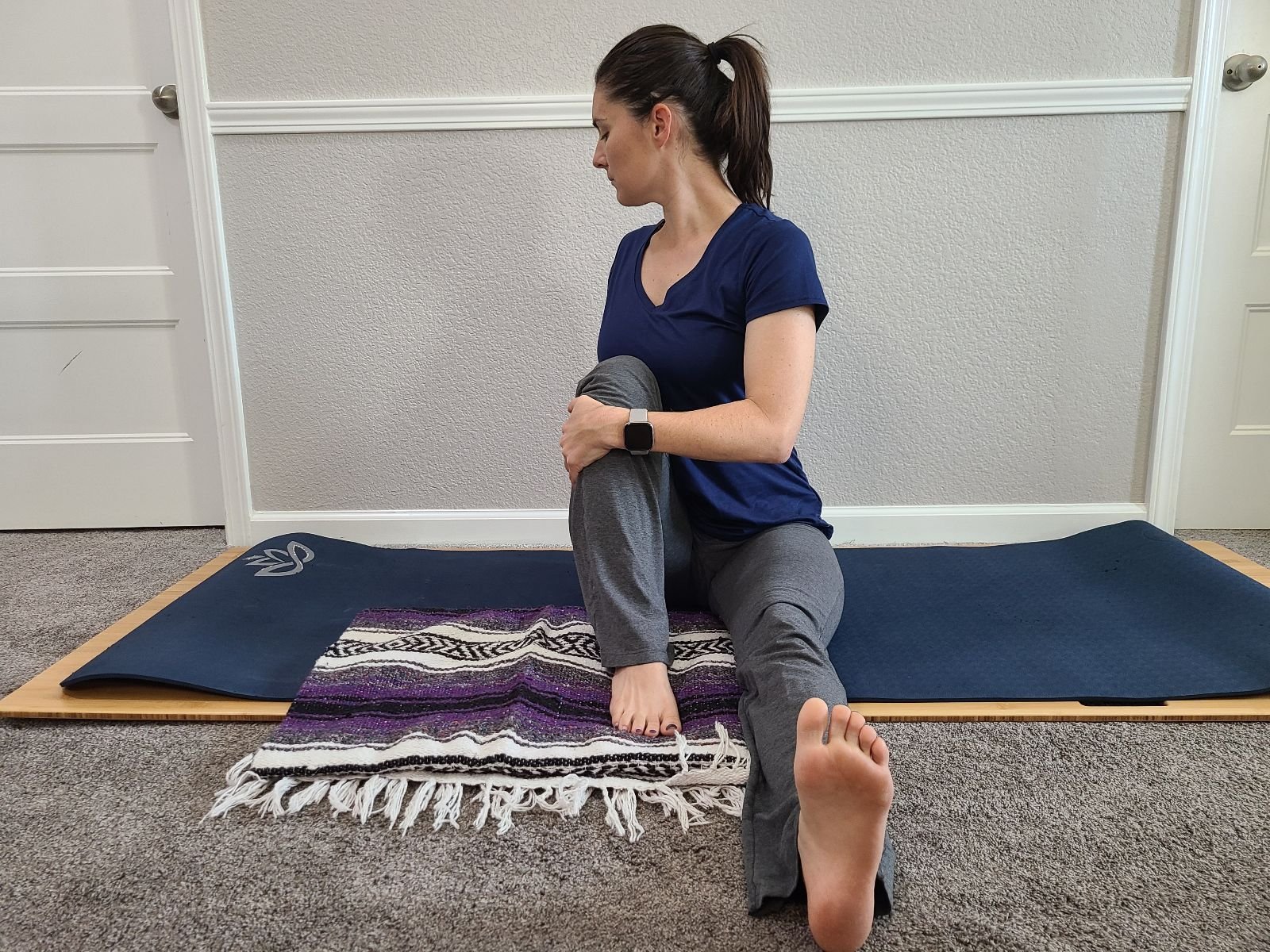Yoga Pose for Leg Length Discrepancy: Marichyasana
/Marichyasana, or Sage Marichi’s Pose, is a seated hamstring stretch or twist that stretches the spine, shoulders, and hips. It also massages the abdominal organs (improving digestion), strengthens the core, and relieves back pain. However, for those with leg length discrepancies (LLDs) or scoliosis it can cause pain. (You can read more about pain in my Pain in Marichyasana post.)
There are four variations of Marichyasana. Each requires a different level of range of motion in the hamstrings, hips, and back. I will discuss variations A and C. Variations B and D are done with the legs in Lotus Pose and are not always accessible to those with LLDs or scoliosis.
Marichyasana is an asymmetric pose, and possible twist, and can require those with LLD or scoliosis to do different actions on each side. As you do the pose, use the opportunity to compare sides, taking note your range of motion and feelings in your body on one side and the other.
There are several contraindications associated with Marichyasana, including injuries to the hips, spine, or shoulders, and pregnancy. Because LLD and scoliosis can affect the hips, spine, and shoulders, this pose should be practiced slowly and consciously. Consult a medical professional to make sure you are able to do this pose.
How to Do Marichyasana A:
Start in Dandasana (Staff Pose) with your legs extended in front of you.
Bend your right knee and place the sole of your right foot on the inside of your left thigh, close to your groin.
Place your right hand on the outside of your right thigh, palm down.
Reach your left arm up and over your head, and then wrap it behind your back and clasp your right hand.
Inhale and lengthen your spine.
Exhale and twist your torso to the right, bringing your forehead down toward your left shin.
Stay in the pose for 5-10 breaths, then repeat on the other side.
How to Do Marichyasana C:
Start in Dandasana (Staff Pose) with your legs extended in front of you.
Bend your right knee and place the sole of your right foot on the outside of your left thigh or knee.
Place your right hand on the outside of your right hip, palm down.
Reach your left arm up and over your head, and then bring your upper arm to the inside on your right knee
Inhale and lengthen your spine.
Exhale and twist your torso to the right.
Stay in the pose for 5–10 breaths, then repeat on the other side.
Things to Watch for
The shorter leg femur is often deeper in the hip socket. It will be more painful to bring it in closer to the hip. The shorter leg may also be difficult to wrap the arms around for a full bind in Marichyasana A. If so, consider a slightly bent knee and a blanket under the shorter leg’s foot to reduce the amount the femur head gets pulled into the socket and to help make the leg a little higher (longer). You can also use a strap to help you reach your hands behind your back or you can keep your hands on the sides of your thighs as you hinge forward.
Even those with even leg lengths can find this pose difficult as a result of individual anatomy: The proportions of leg, arm, and torso lengths can make it more (or less) difficult to perform this pose. People often clasp their hands (bind) in this pose, but if your torso (for example) is proportionally longer than your legs your arms will be farther from your legs and you will have difficulty clasping or getting into the full expression of the pose. Personal anatomy is a main component of how you experience this pose—so watch your ego here and your desire to do it like others.
With LLD and scoliosis the hips are often misaligned, with one more forward than the other. Work to align the hips so they are even front to back. (Sitting with your hips against a wall can help you find alignment.)
Those with scoliosis will find it easier to twist in one direction more than the other. This may mean twisting less to the side with more range of motion in Marichyasana C. In thoracic curves, for example, the torso will rotate in the direction of the curve. This means that it will be easier to twist in the direction of your convexity. It may also be difficult to lock the upper arm or elbow in front of the raised knee in Marichyasana C. You may want to bring the arm to the outside of the raised knee instead. This reduces the degree of the twist. Try to twist the same amount to each side.
As with any pose, it is important to listen to your body. If you experience any pain, come out of the pose and work on variations to make it more accessible.
Other posts in the Yoga Poses for Leg Length Discrepancy Series:
Extended Hand-to-Big-Toe Pose (Utthita Hasta Padangusthasana)
Staff Pose (Dandasana)
Triangle Pose (Trikonasana)
Tree Pose (Vrksasana)
Wide-Legged Forward Fold (Prasarita Padottanasana)
Yogic Squat (Malasana)
And sign up to get my Best Yoga Pose for Leg Length Discrepancies guide




